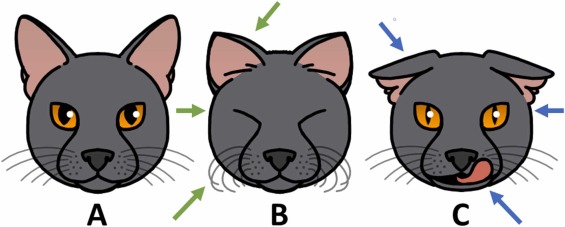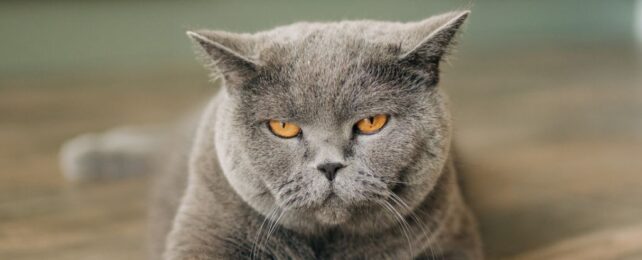Puppy dog eyes might exist to tug on our heartstrings, but a new study suggests cats may have also evolved quite a few facial expressions under our care.
When researchers in the US analyzed the after-hours footage of a cat cafe in Los Angeles, they counted up to 276 distinct facial expressions made by domestic shorthair cats to each other – way more than they expected to find.
Scientists have yet to tally the total number of expressions that a dog can pull off, but chimpanzees are known to make 357 different faces.
Cats, by comparison, are not considered nearly as social as primates or canines, which makes the sheer number of faces they pull during group interactions all the more fascinating.
The new findings suggest that 10,000 years of domestication could have had a very real impact on how some solitary and territorial cats evolved to communicate with one another.
Drawn towards humans and their food, it's possible that some wildcats started living in closer proximity, and friendly behavior with others of their kind might have improved their survival in the long run.
Testing that hypothesis would require a comparison of facial expressions among domesticated cats and wildcats, which has yet to be done.
Nevertheless, past studies suggest that domesticated cats display greater social tolerance and engage more in friendly behaviors, like play or grooming, than wildcats.
The new study builds on the idea that domestic cats are more social than we give them credit for. The research was conducted by ethologist Lauren Scott and evolutionary psychologist Brittany Florkiewicz while they were both at the University of California, Los Angeles (UCLA).
To analyze the expression of cats in the LA cat cafe, the duo used a facial coding system, which is designed to measure discernible facial contortions and break them down into specific muscle movements.
When comparing each unique expression and the social interaction it was used in, researchers identified 45 percent as 'distinctly friendly' and 37 percent as 'distinctly aggressive'.
The rest were deemed ambiguous.
Friendly expressions from the cats included closed eyes, with ears and whiskers pointed forward toward another cat.
An aggressive expression, by comparison, included constricted pupils, flattened ears, and a quick wipe of the lips with the tongue.

Each of the 276 expressions was only counted in the footage a dozen or so times, which means that it's hard for scientists to draw conclusions about how the cats were feeling at the time or why they used the social cues they did.
Daniel Mills, a veterinary behaviorist who was not involved in the study, told Christa Lesteè-Lasserre at Science that many of the friendly expressions noted by Scott and Florkiewicz resemble those made by humans, dogs, and primates, which hints at deeper evolutionary roots.
"Many people still consider cats – erroneously – to be a largely nonsocial species," Mills says.
"There is clearly a lot going on that we are not aware of."
Scott and Florkiewicz note in their paper that because the cat cafe housed between 20 and 30 cats, the social signals used by these creatures may be different from those used by domestic cats that live in smaller groups, or without others of their kind.
The authors are calling for more research on the link between the level of conflict, competition, and cooperation in cat groups and the complexity of facial signals used by these pets.
The study was published in Behavioural Processes.
